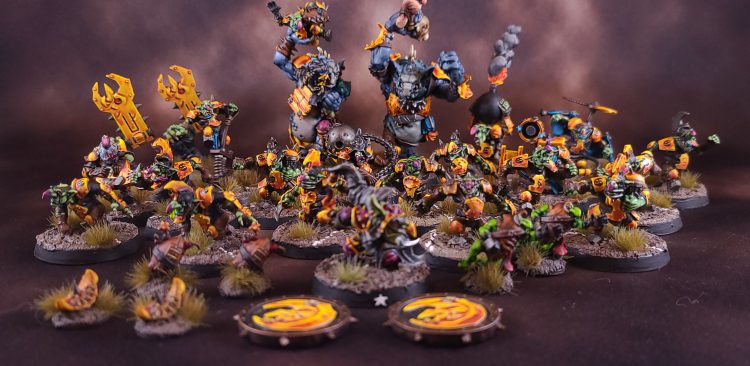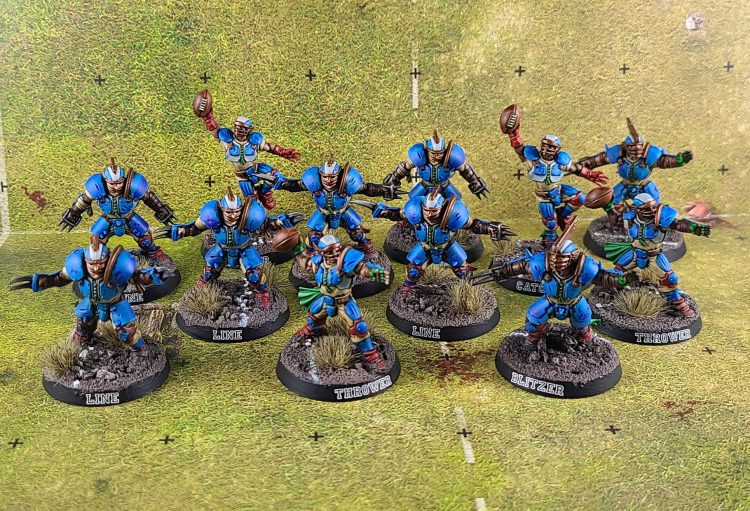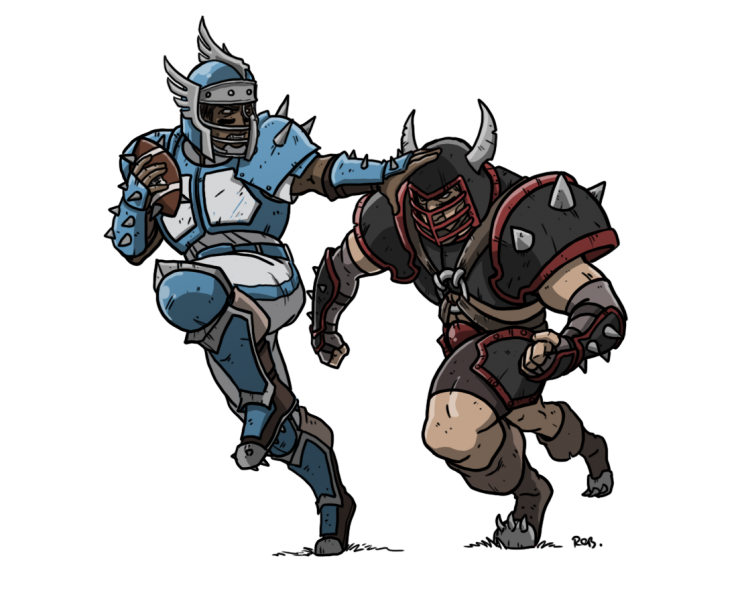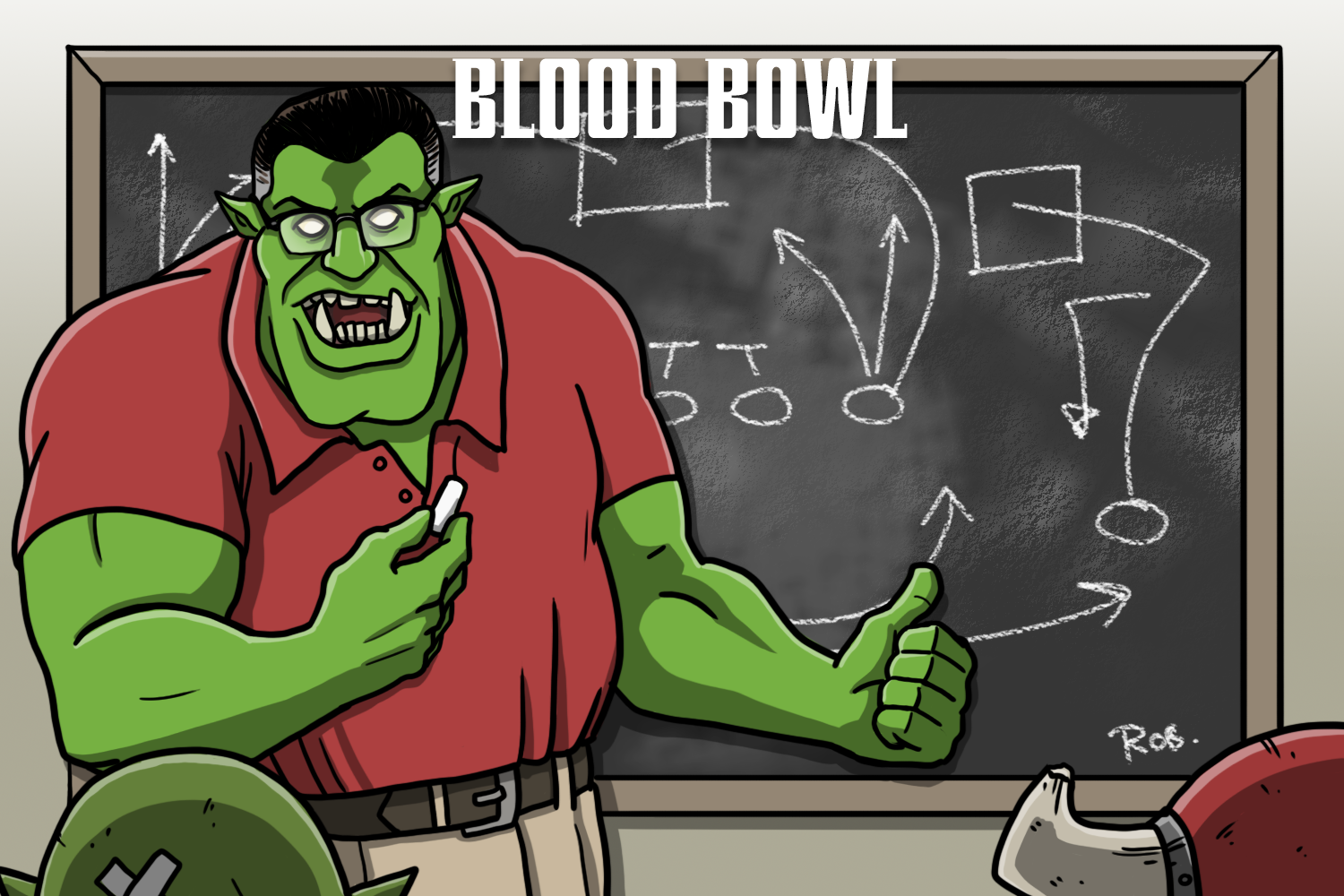Blood Bowl has a thriving worldwide tournament scene that has been going strong since the early 2000’s. The most recent Blood Bowl World Cup attracted over 1300 players to Austria to battle it out, and there are many major tournaments that boast player counts in the 100-300+ range. In this article I’m going to give you the low-down on this highly accessible, well-run, and competitively healthy scene.
Organisation
Blood Bowl has the good fortune to have a player-run worldwide organisation that oversees the sphere of Tournament play. That organization is the NAF (coincidentally the name of the original Blood Bowl League in game lore). The NAF runs a membership system, and coaches who are members have their results recorded and tracked from all the tournaments they attend, enabling a worldwide ranking system. The NAF also makes a yearly set of tournament guidelines that let Tournament Organisers know what rules frameworks will be permitted for their events. They even organise and run some of the major tournaments themselves, and in recent times – especially when tabletop play became almost impossible during the Covid pandemic – the NAF has sponsored and promoted tournament play online, through FUMBBL and the Blood Bowl 2 Video Game.

Major Tournaments
Aside from the World Cup, which returns next year in Alicante in Spain, the BB Tournament scene has 4 traditional ‘Majors’. Those are the NAF Championships in Nottingham, UK, near the home of Warhammer itself; the Dungeonbowl, in Dusseldorf, Germany; the Chaos Cup, in Chicago, USA; and the Spike! Magazine Tournament, which has popped up in various parts of in North America.
Of course all of these countries and many others have their own thriving scene and have many other regular tournaments of considerable size. For example the UK Team Challenge just completed its 6th edition with over 340 players, and Lutece Bowl in France will be returning this year with 200 players.
Roster Building
Tournament Blood Bowl uses the Resurrection concept. What this means is there is no roster development or other consequences of the games played during the tournament. There are no deaths or long-term injuries, no SPP gained, no money gained, etc. You use the same roster for every game.
Most Tournaments allow Rosters to be built with more cash than for a normal starting League team. 1.1m – 1.15m Gold (or 1100-1150TV) is commonplace. This means most teams can purchase more of their key positionals, big guys, and rerolls. It also allows enough cash that teams can perhaps include a Star Player on their team if they make a few sacrifices in other areas, and we’ll touch on this again later.
Blood Bowl does not have the same vast breadth of units or datasheets as certain other games, so while there is still plenty of decision making in roster building, it is not as significant a factor in tournament success. What is significant is skill choice, and most tournaments work on the principle of letting coaches allocate a certain number of skills to their roster. Normally this is roughly half a dozen skills, so there is not an overwhelming amount to chose or keep track of. Skills are usually limited to those selectable as Primary options for players, and allowing multiple skills on a single player is also normally forbidden or limited.
What all of this adds up to is that list-building is a lesser part of Blood Bowl, and coach skill (and maybe a little luck!) is a larger determinant in success.

Tiering
Blood Bowl has always been a game where, by design, rosters are not created equally. As a consequence, Blood Bowl tournaments have long used a tiering concept to give a leg-up to lesser teams, and enable them to compete against those stronger. Usually this is done by giving lower tier teams more skills to select or more money with which to build their roster.
Games Workshop finally embraced this concept themselves in the BB20 release, and made Team Tiers an official part of the rulebook. Unfortunately there is no guaranteed correlation between the tier GW says your team is and what any given TO might consider it to be in their rules pack. In fact, while GW have used a 3-tier system, many tournaments use as many as 5 tiers to provide granular benefits to the various teams.
The Tournament Meta
Because of the relatively low TV and small number of skills in Tournament Blood Bowl, and the fact that the game has largely been unchanged for a decade, it has had a fairly consistent meta. Certain teams that start with good skills or stats, and that can build their rosters with most of their best positionals and rerolls fairly cheaply, have naturally become the top tier teams.
For example, a team such as Dark Elves, which is well able to start with 4 Blitzers and 2 Witch Elves, has 4 Block and 2 Dodge players even before additional skill allocation. This puts them immediately well ahead of other teams who need to chase those basic skills.
Meanwhile a team like Nurgle, which has expensive positionals, expensive rerolls, and none of the fundamental skills, is likely to be well behind the Dark Elves when it builds its basic roster, even with any bonus it gets from being placed in a lower tier.
That said, the vast majority of teams find themselves achieving win rates in the 45-55% range, meaning the tournament meta is very healthy and diverse, and not dictated by the presence of particular oppressive teams.

Recent Developments
The BB2020 release and the subsequent addition of some brand new teams such as Khorne has undoubtedly seen more of a shakeup of the Tournament meta than has been seen for many years. Changes to some of the fundamental game mechanics and rosters have meant that certain perennial Tier 1 teams are undergoing major reappraisal by the community.
The changes to Star Players have had an enormous impact on this format, and the entire Tournament community has been wrestling with their role in the scene since release. The extreme power and low cost of certain stars created some obvious meta-warping effects, and we have seen many tournaments impose either harsh restrictions on star use or simply outright ban them.

Another outlier was the initial performance of Underworld, who had an unprecedented win rate as a result of good star access and the Swarming skill, allowing them to field extra Snotling players and use these to both control the pitch and do damage via fouling. This factor in particular was so powerful that it resulted in a change to the Swarming rule in the GW FAQ, and Underworld have returned to a more expected win rate.
The good news is that with this change and with Star control becoming a feature of more recent rules packs, the BB Resurrection Tournament meta has returned to the kind of general balance that the scene enjoyed for many years. But with many large tournaments worldwide still only now returning after Covid restrictions, and GW continuing to shake up older rosters, there remains a huge element of discovery and innovation to be seen, and that makes it a very exciting time for Blood Bowl players. If you’re an existing Blood Bowl fan, or budding competitive player of any kind, there is no better time to get into this fantastic scene.
We’ll be taking a more frequent and more detailed look at the world of Tournament Blood Bowl in future articles here on Goonhammer. Got any questions or ideas for us? Shoot us an email at Contact@Goonhammer.com.


